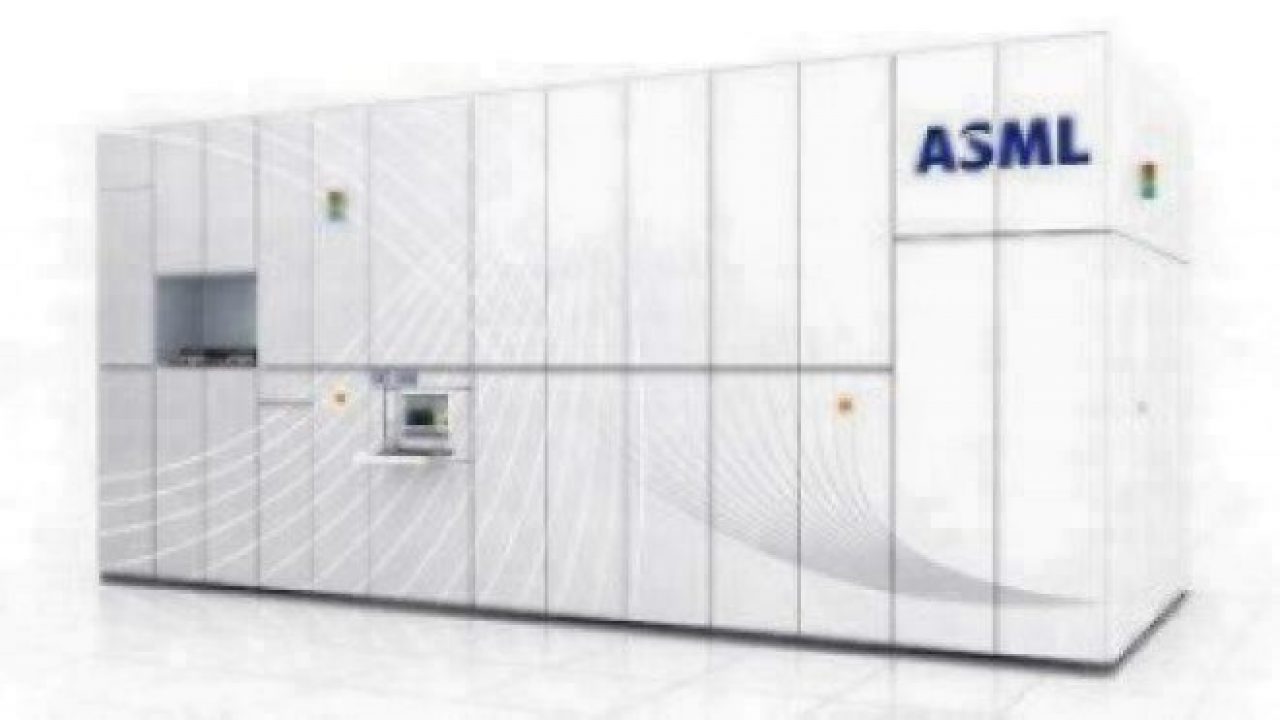EUV lithography scanner aims to produce 104 wafers/h
Article By : Rick Merritt

The ASML NXE:3400B EUV lithography scanner runs at 148W to produce 104 wafers/h, capable of creating overlays within a 3nm tolerance.
ASML has revealed an extreme ultraviolet lithography scanner, the NXE:3400B system, at the recently concluded SPIE Advanced Lithography conference, which it hopes make it into volume-production fabs.
A number of assumptions surround the production-worthiness of the ASML system including photo-resist materials effective at light exposures of 20mJ/cm², said Chris Mack, chief technology officer of Fractilia. The fact is that current resists need 30mJ/cm², he said. Manufacturing and distribution will depend on a variety of other ASML and third-party tools arriving in synch, including pellicles to keep contaminating particles off of EUV wafers. “If the schedules slip a year, we will miss the 5nm window,” he said. For its part, ASML is shipping the first 3400B this week. The system is the company’s first rated to produce 125 wafers/hour, the throughput target for use in production fabs.
![[NXE 3400 flexible illuminator (cr)]](/wp-content/uploads/sites/2/2020/04/NXE_3400_flexible_illuminator_cr.jpg)
Figure 1: The ASML NXE:3400B EUV lithography scanner's features.
The company hits the goal not by nudging its light source up to the target level of 250W, but by speeding up wafer handling inside the machine that should be able to hit 210W. Initially, the 3400B is expected to run at 148W to produce 104 wafers/h.
In a separate talk, ASML gave the first detailed look at its second generation, a scanner announced in November with upgraded optics co-designed with Carl Zeiss. It will be nearly twice the size of the 3400 and print 8nm features, 40% smaller than those made by the 3400.
![[ASML NXE 3400 B process (cr)]](/wp-content/uploads/sites/2/2020/04/ASML_NXE_3400_B_process_cr.jpg)
Figure 2: ASML gave the first detailed look at its second generation scanner that will be twice the size of the 3400; and print 8nm features-40% smaller than those made by the 3400.
Most, if not all, of the 14 EUV systems installed in the field are expected to take the upgrade, a process that could take two years. Each upgrade takes about three months, a complex process compared to open-heart surgery in part because it involves breaking the vacuum that holds the light source and other key components.
The buzz on EUV commercial use is coming into focus. However, with real hurdles still ahead and no announcements of major purchase orders, sceptics still had plenty of breathing room.
« Next: Manufacturers pick EUV combos
Subscribe to Newsletter
Test Qr code text s ss


